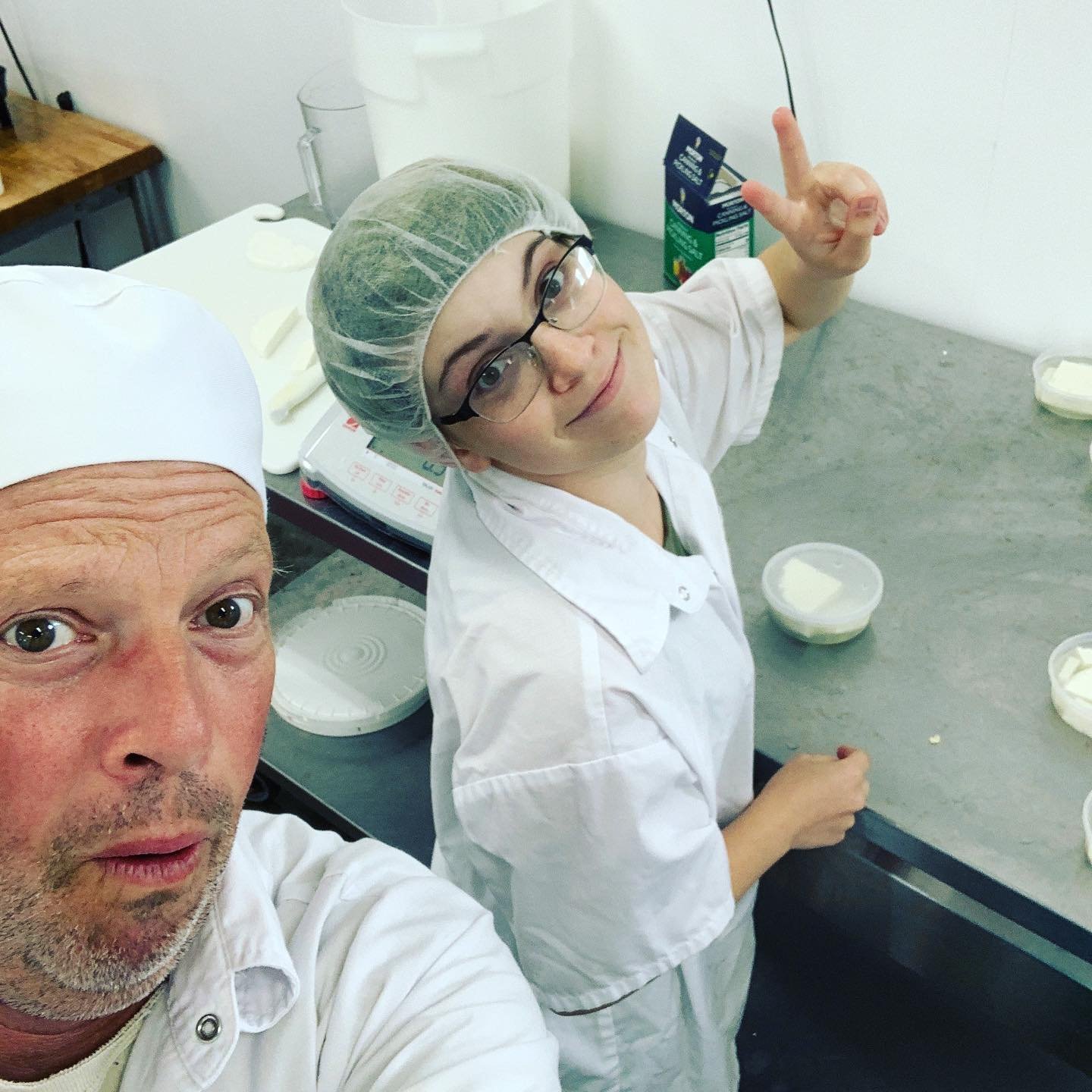
Sitting on top of a grassy hill, keeping watch over our herd of goats, it’s easy to get caught up in thoughts about the shepherds of yore. The sun beating down on my back and darkening my shoulders is the same sun that graced the skin of our ancestors; I might be on a completely different continent, living a wildly different lifestyle but in this moment I can just feel the gaze of the generations who came before me. All it takes for a breeze to bring up with it the distant sounds of traffic in the town below and that spell is broken, but the pondering on the past remains.
On break from my Anthropology studies, I’ve spent the summer as shepherdess and assistant cheesemaker on the family farm. All of which converges in more ways than you might think.
When I initially asked my parents about the origins of cheese it was probably either one of those “child asking why about everything that moves” questions or just a general query on why they thought buying a farm and moving was a good idea. Either way, their answer was one I would repeat any time I got a similar question from curious kids (or adults) at farmer’s markets. The story goes something like this: a long, long time ago a shepherd brought a flask filled with milk with him as he watched over his flock. It was an incredibly hot day, and by the time he sat down for lunch the milk he brought with him had curdled!
Now that’s a perfectly cutesy story to bring up whenever a kid asks, but it doesn’t really get at the meat of the matter. Cheese, for something that can be so simple to make, is incredibly varied across cultures and with culture. “Oh a shepherd let his milk get hot once” doesn’t even begin to capture what ancient cheese making and dairying cultures looked like and just how far back these roots reach.
Cheese-making, like dairying, arose in different areas across the world at different times. The legacy of these ancient pockets of dairying communities sticks with us today in our DNA. If you aren’t lactose-intolerant, congratulations! One of your ancestors was a member of an ancient dairying society that evolved lactase-persistence (the opposite of lactose-intolerance) and now you’re a milk-drinking mutant variation!
Many people, in the US at least, got their lactase-persistent genes from northern and central European herders who have been making cheese since before 5400 BCE. Pottery sieves from that time contain residues produced when milk is heated up enough to start the fermentation process associated with cheese-making. These linearbandkeramik sieves are found across northern Europe, mostly in Germany and Poland, and were probably used to separate the curds from the whey, similarly to how modern cheeses are drained.
A bit further south from Germany, and a bit closer to the present day, lays Arbon Bleiche III, a Swiss village that burned down around 3400 BCE. Pottery preserved from the site also contains residues associated with cheese-making. The floral and faunal deposits within the site suggest that many of the animals were being used for seasonal milk (and cheese) production.
Now that was a whole bunch of waffle squeezed into two paragraphs. Residue analysis? Faunal deposits? We’re talking about the stuff that would go on to become painfully orange goop that’s ladled across chips and sold for way too much at a ballpark. You can think of the history of cheese in many ways, from a dry, academic cheddar to a kid-friendly can of cheese whiz, but here’s one of my favorite ways to contextualize this.
Cheese-making is thousands of years old. Herders in Neolithic Switzerland were letting their sheep out to pasture and watching their flocks graze the summer mountainside in much the same way the modern herders are. The Ciobani in Romania and Pyrenean herders in France follow their flocks out to their summer pastures, living within the same cycle as their ancient predecessors, living with their dogs and sheep for months on end, with only the other herders to keep them company. These folks follow the seasonal retreat of the snowcaps and the growth of green pastures with their animals, structuring their year around the birth of new lambs and the subsequent milking and cheese-making.
The tools used have changed and the animals are much more distinct from their wild ancestors, but the rhythm of the seasons has stayed the same. We follow the same constant seasonality, with ewes giving birth in the winter, the lambs growing large enough to follow the herd in time for spring. Our reasoning may be slightly different, and we are no longer as reliant on the seasons as they once were, but at heart the process remains. The shepherd’s duty to protect their animals, their livelihood, and their awareness of the shifting seasons remains, all because, millennia ago, some herders wanted to make more of that funky, delicious hardened milk.
It’s comforting to think about, as I sit here, listening to ambient cave sounds and snacking on a slice of frozen pizza, that people have not changed much since then. We’ve all still got the same brains and much of the same tendencies, and that’s really what anthropology is all about. Cultures, societies, times, everything changes, but humanity remains remarkably the same. It can make you feel a bit misty eyed, or a bit depressed depending on how you look at it. Any time I sit down and think about it or learn something new my universal reaction is “that’s absolutely wild”. And you know what? This cheese stuff is pretty wild!